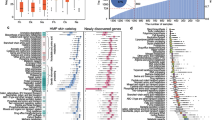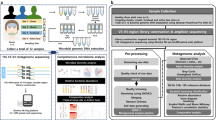Abstract
Background
The skin microbiome is essential in guarding against harmful pathogens and responding to environmental changes by generating substances useful in the cosmetic and pharmaceutical industries. Among these microorganisms, Streptococcus is a bacterial species identified in various isolation sources. In 2021, a strain of Streptococcus infantis, CX-4, was identified from facial skin and found to be linked to skin structure and elasticity. As the skin-derived strain differs from other S. infantis strains, which are usually of oral origin, it emphasizes the significance of bacterial variation by the environment.
Objective
This study aims to explore the unique characteristics of the CX-4 compared to seven oral-derived Streptococcus strains based on the Whole-Genome Sequencing data, focusing on its potential role in skin health and its possible application in cosmetic strategies.
Methods
The genome of the CX-4 strain was constructed using PacBio Sequencing, with the assembly performed using the SMRT protocol. Comparative whole-genome analysis was then performed with seven closely related strains, utilizing web-based tools like PATRIC, OrthoVenn3, and EggNOG-mapper, for various analyses, including protein association analysis using STRING.
Results
Our analysis unveiled a substantial number of Clusters of Orthologous Groups in diverse functional categories in CX-4, among which sphingosine kinase (SphK) emerged as a unique product, exclusively present in the CX-4 strain. SphK is a critical enzyme in the sphingolipid metabolic pathway, generating sphingosine-1-phosphate. The study also brought potential associations with isoprene formation and retinoic acid synthesis, the latter being a metabolite of vitamin A, renowned for its crucial function in promoting skin cell growth, differentiation, and maintaining of skin barrier integrity. These findings collectively suggest the potential of the CX-4 strain in enhancing of skin barrier functionality.
Conclusion
Our research underscores the potential of the skin-derived S. infantis CX-4 strain by revealing unique bacterial compounds and their potential roles on human skin.





Similar content being viewed by others
References
Abranches J, Zeng L, Kajfasz JK et al (2018) Biology of oral Streptococci. Microbiol Spectr. https://doi.org/10.1128/microbiolspec.gpp3-0042-2018
Agrawal R, Bollag WB (2022) De(C1P)hering the role of ceramide-1-phosphate levels in skin wound healing. J Lipid Res 63:100231
Ba X, Matuszewska M, Kalmar L et al (2023) High-throughput mutagenesis reveals a role for antimicrobial resistance- and virulence-associated mobile genetic elements in staphylococcus aureus host adaptation. Microbiol Spectr. https://doi.org/10.1128/spectrum.04213-22
Besser J, Carleton HA, Gerner-Smidt P et al (2018) Next-generation sequencing technologies and their application to the study and control of bacterial infections. Clin Microbiol Infect 24:335
Bland C, Ramsey TL, Sabree F et al (2007) CRISPR Recognition Tool (CRT): a tool for automatic detection of clustered regularly interspaced palindromic repeats. BMC Bioinform. https://doi.org/10.1186/1471-2105-8-209
Blin K, Shaw S, Augustijn HE et al (2023) AntiSMASH 7.0: new and improved predictions for detection, regulation, chemical structures and visualisation. Nucl Acids Res. https://doi.org/10.1093/nar/gkad344
Byrd AL, Belkaid Y, Segre JA (2018) The human skin microbiome. Nat Rev Microbiol 16:143
Cantalapiedra CP, Hern̗andez-Plaza A, Letunic I, et al (2021) eggNOG-mapper v2: functional annotation, orthology assignments, and domain prediction at the metagenomic scale. Mol Biol Evol. https://doi.org/10.1093/molbev/msab293
Chakma V, Barman DN, Das SC et al (2023) In silico analysis of a novel hypothetical protein (YP_498675.1) from Staphylococcus aureus unravels the protein of tryptophan synthase beta superfamily (Try-synth-beta_ II). J Genet Eng Biotechnol 21:135. https://doi.org/10.1186/s43141-023-00613-7
Cui L, Jia Y, Cheng ZW et al (2016) Advancements in the maintenance of skin barrier/skin lipid composition and the involvement of metabolic enzymes. J Cosmet Dermatol 15:549
D’Ambrosio DN, Clugston RD, Blaner WS (2011) Vitamin A metabolism: an update. Nutrients 3:63
De Maio N, Shaw LP, Hubbard A et al (2019) Comparison of long-read sequencing technologies in the hybrid assembly of complex bacterial genomes. Microb Genom. https://doi.org/10.1099/mgen.0.000294
Duester G (1994) Retinoids and the alcohol dehydrogenase gene family. EXS. https://doi.org/10.1007/978-3-0348-7330-7_28
Duester G (1998) Alcohol dehydrogenase as a critical mediator of retinoic acid synthesis from vitamin A in the mouse embryo. J Nutr 128:459S
Dunne WM, Westblade LF, Ford B (2012) Next-generation and whole-genome sequencing in the diagnostic clinical microbiology laboratory. Eur J Clin Microbiol Infect Dis 31:1719
Edgar RC (2007) PILER-CR: fast and accurate identification of CRISPR repeats. BMC Bioinform. https://doi.org/10.1186/1471-2105-8-18
Fujii M (2021) The pathogenic and therapeutic implications of ceramide abnormalities in atopic dermatitis. Cells 10:2386
Guglielmetti S, Taverniti V, Minuzzo M et al (2010) Oral bacteria as potential probiotics for the pharyngeal mucosa. Appl Environ Microbiol. https://doi.org/10.1128/AEM.00109-10
Huch M, De Bruyne K, Cleenwerck I et al (2013) Streptococcus rubneri sp. nov., isolated from the human throat. Int J Syst Evol Microbiol. https://doi.org/10.1099/ijs.0.048538-0
Huerta-Cepas J, Szklarczyk D, Heller D et al (2019) EggNOG 5.0: a hierarchical, functionally and phylogenetically annotated orthology resource based on 5090 organisms and 2502 viruses. Nucl Acids Res. https://doi.org/10.1093/nar/gky1085
Hyatt D, Chen GL, LoCascio PF et al (2010) Prodigal: prokaryotic gene recognition and translation initiation site identification. BMC Bioinform. https://doi.org/10.1186/1471-2105-11-119
Imokawa G, Abe A, Jin K et al (1991) Decreased level of ceramides in stratum corneum of atopic dermatitis: an etiologic factor in atopic dry skin? J Investig Dermatol. https://doi.org/10.1111/1523-1747.ep12470233
Izquierdo-Fiallo K, Muñoz-Villagrán C, Orellana O et al (2023) Comparative genomics of the proteostasis network in extreme acidophiles. PLoS ONE. https://doi.org/10.1371/journal.pone.0291164
Johnson EL, Heaver SL, Waters JL et al (2020) Sphingolipids produced by gut bacteria enter host metabolic pathways impacting ceramide levels. Nat Commun. https://doi.org/10.1038/s41467-020-16274-w
Kawamura Y, Hou XG, Todome Y et al (1998) Streptococcus peroris sp. nov. and Streptococcus infantis sp. nov., new members of the Streptococcus mitis group, isolated from human clinical specimens. Int J Syst Bacteriol. https://doi.org/10.1099/00207713-48-3-921
Kim JH, Wang C, Jang HJ et al (2016) Isoprene production by Escherichia coli through the exogenous mevalonate pathway with reduced formation of fermentation byproducts. Microb Cell Fact. https://doi.org/10.1186/s12934-016-0612-6
Kim G, Kim M, Kim M et al (2021) Spermidine-induced recovery of human dermal structure and barrier function by skin microbiome. Commun Biol. https://doi.org/10.1038/s42003-020-01619-4
Klemm E, Dougan G (2016) Advances in understanding bacterial pathogenesis gained from whole-genome sequencing and phylogenetics. Cell Host Microb 19:599
Kleuser B, Bäumer W (2023) Sphingosine 1-phosphate as essential signaling molecule in inflammatory skin diseases. Int J Mol Sci 24:1456
Lartillot N, Philippe H (2004) A Bayesian mixture model for across-site heterogeneities in the amino-acid replacement process. Mol Biol Evol. https://doi.org/10.1093/molbev/msh112
Lew L, Liong M (2013) Bioactives from probiotics for dermal health: functions and benefits. J Appl Microbiol 114:1241–1253
Liu L, Du G, Chen J et al (2009) Microbial production of low molecular weight hyaluronic acid by adding hydrogen peroxide and ascorbate in batch culture of Streptococcus zooepidemicus. Bioresour Technol 100:362–367
Liu D, Xiao C, Li X et al (2021) Streptococcus shenyangsis sp. nov., a new species isolated from the oropharynx of a healthy child from Shenyang China. Curr Microbiol. https://doi.org/10.1007/s00284-021-02500-1
McFall-Ngai M, Hadfield MG, Bosch TCG et al (2013) Animals in a bacterial world, a new imperative for the life sciences. Proc Natl Acad Sci USA 110:3229
Muraski MJ, Nilsson EM, Fritz MJ et al (2023) Adaptation to overflow metabolism by mutations that impair tRNA modification in experimentally evolved bacteria. Mbio. https://doi.org/10.1128/mbio.00287-23
Nawrocki EP, Burge SW, Bateman A et al (2015) Rfam 12.0: Updates to the RNA families database. Nucl Acids Res. https://doi.org/10.1093/nar/gku1063
Pazos F, Ranea JAG, Juan D, Sternberg MJE (2005) Assessing protein co-evolution in the context of the tree of life assists in the prediction of the interactome. J Mol Biol. https://doi.org/10.1016/j.jmb.2005.07.005
Pollastri S, Baccelli I, Loreto F (2021) Isoprene: an antioxidant itself or a molecule with multiple regulatory functions in plants? Antioxidants 10:684
Rhoads A, Au KF (2015) PacBio sequencing and its applications. Genom Proteom Bioinform 13:278
Riccardi C, Calvanese M, Ghini V et al (2023) Metabolic robustness to growth temperature of a cold-adapted marine bacterium. mSystems. https://doi.org/10.1128/msystems.01124-22
Rocchetti MT, Bellanger T, Trecca MI et al (2023) Molecular chaperone function of three small heat-shock proteins from a model probiotic species. Cell Stress Chaperones. https://doi.org/10.1007/s12192-022-01309-6
Saati-Santamaría Z, Baroncelli R, Rivas R, García-Fraile P (2022) Comparative genomics of the genus pseudomonas reveals host- and environment-specific evolution. Microbiol Spectr. https://doi.org/10.1128/spectrum.02370-22
Salipante SJ, SenGupta DJ, Cummings LA et al (2015) Application of whole-genome sequencing for bacterial strain typing in molecular epidemiology. J Clin Microbiol. https://doi.org/10.1128/JCM.03385-14
Schattner P, Brooks AN, Lowe TM (2005) The tRNAscan-SE, snoscan and snoGPS web servers for the detection of tRNAs and snoRNAs. Nucl Acids Res. https://doi.org/10.1093/nar/gki366
Sengupta S, Azad RK (2023) Leveraging comparative genomics to uncover alien genes in bacterial genomes. Microb Genom. https://doi.org/10.1099/mgen.0.000939
Song Y, Guan Z, Van Merkerk R et al (2020) Production of squalene in Bacillus subtilis by squalene synthase screening and metabolic engineering. J Agric Food Chem. https://doi.org/10.1021/acs.jafc.0c00375
Sun J, Lu F, Luo Y et al (2023) OrthoVenn3: an integrated platform for exploring and visualizing orthologous data across genomes. Nucl Acids Res. https://doi.org/10.1093/nar/gkad313
Tettelin H, Riley D, Cattuto C, Medini D (2008) Comparative genomics: the bacterial pan-genome. Curr Opin Microbiol 11:472
Thermes C (2014) Ten years of next-generation sequencing technology. Trends Genet 30:418–426
Tsai WH, Chou CH, Chiang YJ et al (2021) Regulatory effects of lactobacillus plantarum-GMNL6 on human skin health by improving skin microbiome. Int J Med Sci. https://doi.org/10.7150/ijms.51545
Vickers CE, Possell M, Cojocariu CI et al (2009) Isoprene synthesis protects transgenic tobacco plants from oxidative stress. Plant Cell Environ. https://doi.org/10.1111/j.1365-3040.2009.01946.x
Wang Y, Baumdicker F, Schweiger P et al (2021) Horizontal gene transfer-mediated bacterial strain variation affects host fitness in Drosophila. BMC Biol. https://doi.org/10.1186/s12915-021-01124-y
Wattam AR, Abraham D, Dalay O et al (2014) PATRIC, the bacterial bioinformatics database and analysis resource. Nucl Acids Res. https://doi.org/10.1093/nar/gkt1099
Zasada M, Budzisz E (2019) Retinoids: active molecules influencing skin structure formation in cosmetic and dermatological treatments. Postepy Dermatol Alergol 36:392
Funding
This research was supported by the Basic Science Research Capacity Enhancement Project (Bio-Medical Engineering Core Facility and Support for activating joint research) through the Korea Basic Science Institute (National research Facilities and Equipment Center) Grant funded by the Ministry of Education (Grant nos. 2019R1A6C1010033 and 2021R1A6C103B392) and Basic Science Research Program through the National Research Foundation of Korea (NRF) funded by the Ministry of Education (NRF-RS-2023-00275307).
Author information
Authors and Affiliations
Corresponding author
Ethics declarations
Conflict of interest
The authors declare that they have no conflict of interest.
Informed consent
Informed consent was obtained from all individual participants included in the study.
Additional information
Publisher's Note
Springer Nature remains neutral with regard to jurisdictional claims in published maps and institutional affiliations.
Supplementary Information
Below is the link to the electronic supplementary material.
Rights and permissions
Springer Nature or its licensor (e.g. a society or other partner) holds exclusive rights to this article under a publishing agreement with the author(s) or other rightsholder(s); author self-archiving of the accepted manuscript version of this article is solely governed by the terms of such publishing agreement and applicable law.
About this article
Cite this article
Lee, H., Lee, DG., Jo, H. et al. Comparative whole genome analysis of face-derived Streptococcus infantis CX-4 unravels the functions related to skin barrier. Genes Genom 46, 499–510 (2024). https://doi.org/10.1007/s13258-024-01495-w
Received:
Accepted:
Published:
Issue Date:
DOI: https://doi.org/10.1007/s13258-024-01495-w




